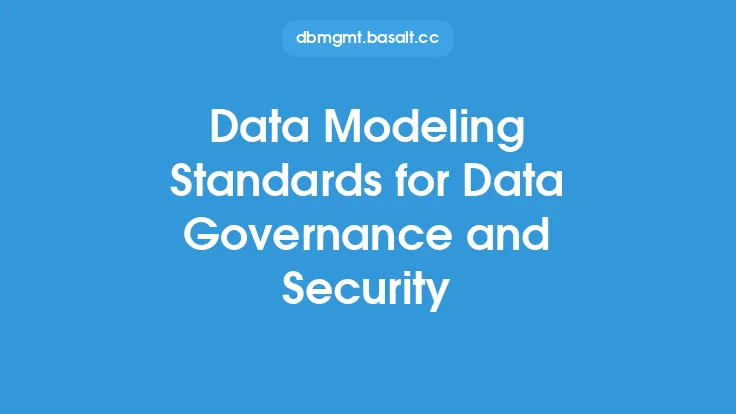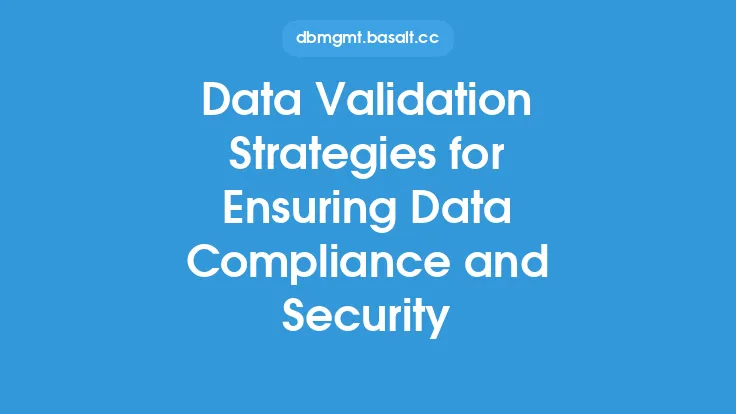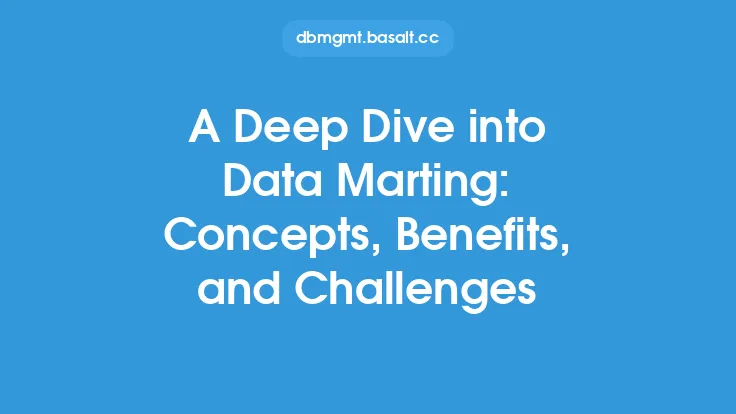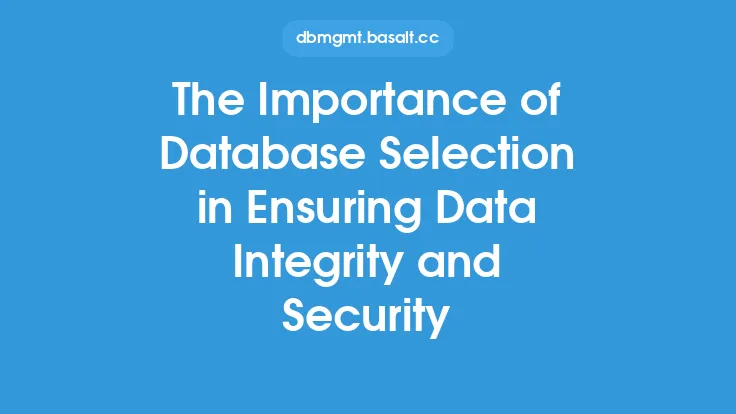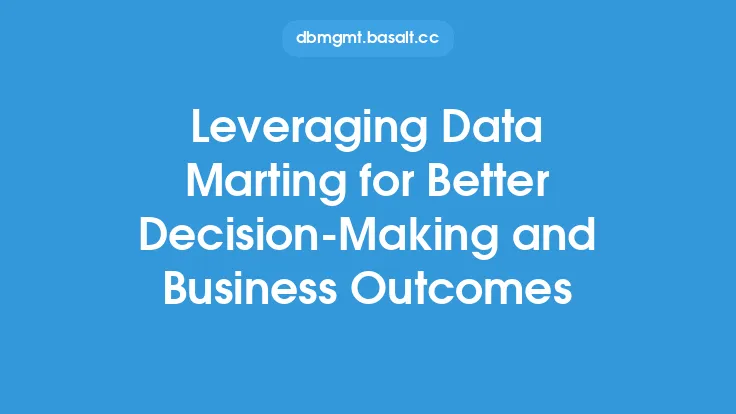Data consistency and security are crucial aspects of any data management system, and data marting plays a significant role in ensuring these aspects are met. Data marting is a process of extracting data from various sources, transforming it into a standardized format, and loading it into a centralized repository, known as a data mart. This process enables organizations to have a single, unified view of their data, which is essential for making informed business decisions.
Introduction to Data Governance
Data governance is a set of processes, policies, and procedures that ensure the accuracy, completeness, and security of an organization's data. It involves establishing clear roles and responsibilities, defining data standards, and implementing data quality controls. Effective data governance is critical in ensuring that data is consistent, reliable, and secure, which is essential for making informed business decisions. Data governance also involves ensuring that data is properly classified, stored, and protected, which is critical in preventing data breaches and ensuring compliance with regulatory requirements.
Data Marting and Data Consistency
Data marting plays a critical role in ensuring data consistency by providing a single, unified view of an organization's data. By extracting data from various sources and loading it into a centralized repository, data marting enables organizations to eliminate data inconsistencies and ensure that data is accurate and up-to-date. Data marting also involves transforming data into a standardized format, which ensures that data is consistent across different systems and applications. This is critical in ensuring that data is reliable and can be used to make informed business decisions.
Data Security and Access Control
Data security is a critical aspect of data governance, and data marting plays a significant role in ensuring that data is secure. By storing data in a centralized repository, data marting enables organizations to implement robust access controls, which ensure that only authorized personnel have access to sensitive data. Data marting also involves encrypting data, both in transit and at rest, which ensures that data is protected from unauthorized access. Additionally, data marting enables organizations to implement data masking and anonymization, which ensures that sensitive data is protected and cannot be used to identify individuals.
Data Quality and Validation
Data quality is a critical aspect of data governance, and data marting plays a significant role in ensuring that data is accurate and complete. By implementing data quality controls, data marting enables organizations to validate data against predefined rules and ensure that data is consistent and accurate. Data marting also involves implementing data profiling, which enables organizations to identify data quality issues and take corrective action. This is critical in ensuring that data is reliable and can be used to make informed business decisions.
Data Lineage and Provenance
Data lineage and provenance are critical aspects of data governance, and data marting plays a significant role in ensuring that data is properly tracked and documented. By implementing data lineage, data marting enables organizations to track the origin and movement of data, which ensures that data is properly documented and can be audited. Data marting also involves implementing data provenance, which enables organizations to track the history and ownership of data, which ensures that data is properly managed and protected.
Best Practices for Implementing Data Marting and Data Governance
Implementing data marting and data governance requires a structured approach, and there are several best practices that organizations can follow to ensure success. These include establishing clear roles and responsibilities, defining data standards, and implementing data quality controls. Organizations should also implement robust access controls, encrypt data, and implement data masking and anonymization. Additionally, organizations should implement data profiling, data lineage, and data provenance to ensure that data is properly tracked and documented.
Technical Considerations for Data Marting and Data Governance
From a technical perspective, implementing data marting and data governance requires a range of skills and expertise. Organizations should have a good understanding of data architecture, data modeling, and data warehousing. They should also have expertise in data quality, data security, and data governance. Additionally, organizations should have a range of technical tools and technologies, including data integration tools, data quality tools, and data security tools. These tools and technologies enable organizations to extract, transform, and load data, as well as implement data quality controls and access controls.
Conclusion
In conclusion, data marting and data governance are critical aspects of any data management system, and they play a significant role in ensuring data consistency and security. By implementing data marting and data governance, organizations can ensure that data is accurate, complete, and secure, which is essential for making informed business decisions. Organizations should establish clear roles and responsibilities, define data standards, and implement data quality controls to ensure that data is consistent and reliable. They should also implement robust access controls, encrypt data, and implement data masking and anonymization to ensure that data is secure. By following best practices and considering technical requirements, organizations can implement effective data marting and data governance strategies that meet their business needs.
